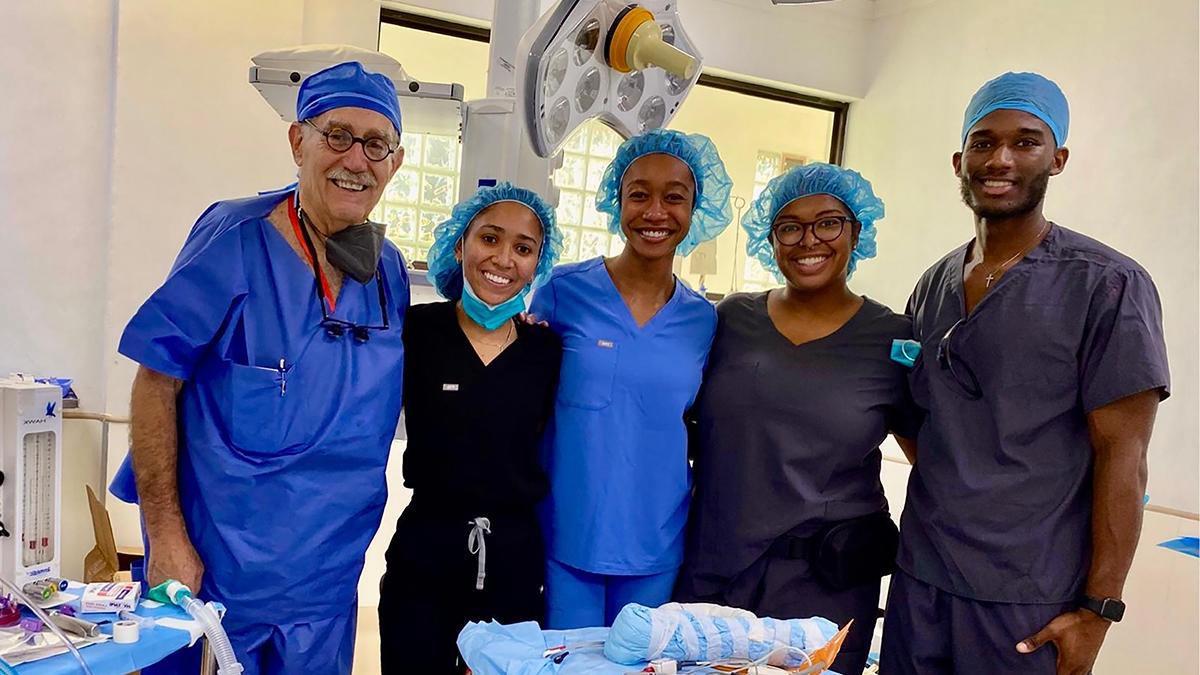Graduate student discovers youngest transiting planet ever
Identified by Carolina astronomer Madyson Barber, the “baby” planet is 3 million years old and roughly the size of Jupiter.

Carolina graduate student Madyson Barber has spent the last three years scanning the universe for newborn planets — one star cluster at time.
The work began as research for Barber’s thesis project in the College of Arts and Sciences’ physics and astronomy department, but it has since led to a major finding. Earlier this year, Barber identified the youngest transiting planet ever discovered.
The planet, named TIDYE-1b, is roughly the size of Jupiter and is an estimated 3 million years old. To put that age into perspective: If Earth were a 50-year-old person, TIDYE-1b would be a 2-week-old infant.
Barber found the planet under the direction of UNC-Chapel Hill associate professor Andrew Mann, who leads a team of nine students in his Young Worlds Lab in Phillips Hall. On Nov. 20, the international science journal Nature published the 38-author paper titled “A Giant Planet Transiting a 3Myr Protostar With a Misaligned Disk,” with Barber and Mann as lead authors.
Barber is still wrapping her mind around the magnitude of her discovery.
“I’ve been looking for new planets for a while now, and it felt like we weren’t finding anything,” Barber said. “This was one of the first planets that popped out of our pipeline. It still feels really weird. ‘Weird’ is the best word I have for it.”
Barber has been part of the Young Worlds Lab since 2020, when she was still an undergraduate.
Mann founded the lab with the goal of better understanding the formation of young planets and how they evolve over time. To find young planets, Mann, Barber and the team observe the light emitted by stars. If the light dims, it could be the sign of a transiting planet.
“When we’re looking for transits, we’re looking at the star’s brightness over a period of time,” Barber said. “When the planet comes in front of the star, we see a little dip in that brightness, because it’s blocking some of the star. So we’re looking for those repeated dips in the light curve.”
Astronomers have found dozens of transiting planets in the 10- to 40-million-year-old range, but younger planets had been elusive before Barber’s discovery. A key reason why young planets are difficult to find is due to the thick, view-blocking protoplanetary disks that form around stars in the first 5 to 10 million years of life.
However, the star that TIDYE-1b orbits has a misaligned disk, leaving the planet visible. The origin of that misalignment is still a mystery, and one that baffles astronomers.
“Planets form in disks, and what you’d expect is the star, the planet and the disk to all be aligned,” Mann said. “The really weird thing about this system is the planet has an orientation that agrees with the star, but the disk is way off. It’s something like 60-plus degrees off.
“Every astronomer looks at that and goes, ‘Really? That’s weird.’ Because, you know, every astronomer is thinking about angular momentum, just from intro physics, and they know that shouldn’t happen.”
Clearly, there’s more to learn about TIDYE-1b and its origins. Barber is taking the lead on further observations, with a trip planned for the W.M. Keck Observatory in Hawaii. Mann and Barber are also proposing for time with the James Webb Space Telescope — the largest in space.
Studying young planets like TIDYE-1b is essential to understanding how planets form and evolve.
“This proves that we can find these young systems,” Barber said. “So now we know we should be looking for more, and if we can make a population of these young systems, then we can draw even more conclusions.”







